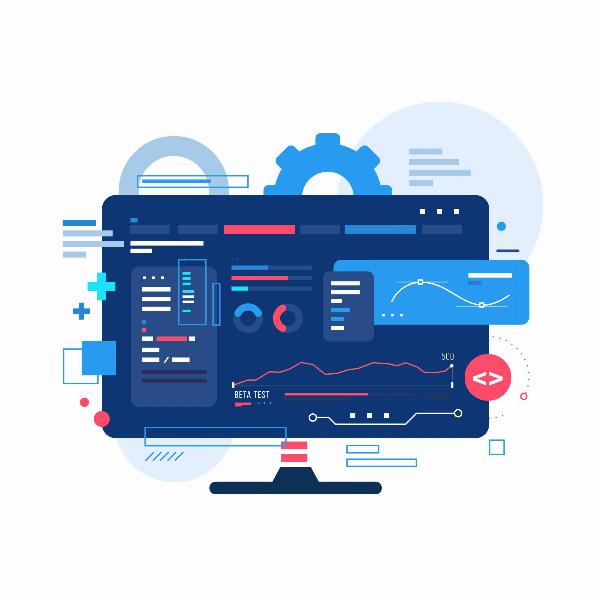Automating Visual Tasks: The Rise of Computer Vision Services in Automation

Strong 8k brings an ultra-HD IPTV experience to your living room and your pocket.
In today’s fast-paced digital landscape, the demand for automation is at an all-time high. Businesses are increasingly leveraging technology to enhance productivity, reduce operational costs, and streamline processes. One of the key technologies driving this transformation is computer vision. As a subset of artificial intelligence, computer vision focuses on enabling machines to interpret and understand visual information from the world around them. This article explores the rise of computer vision services in automation and how computer vision solutions are reshaping various industries.
Understanding Computer Vision
Computer vision involves the use of algorithms and machine learning techniques to analyze visual data from the environment. This includes images and videos, allowing machines to recognize objects, track movements, and make informed decisions based on visual inputs. By simulating human vision, computer vision can automate tasks that traditionally required human intervention, enhancing efficiency and accuracy.
The Growing Demand for Automation
The global shift toward automation is driven by the need for increased efficiency and precision in various sectors. Industries such as manufacturing, healthcare, retail, and logistics are adopting automation solutions to minimize errors, reduce labor costs, and improve overall productivity. The integration of computer vision into these sectors allows organizations to automate visual tasks, such as quality control, inventory management, and surveillance.
Key Benefits of Computer Vision in Automation
Increased Accuracy: Computer vision solutions can analyze visual data with high precision, significantly reducing the chances of human error. For example, in manufacturing, computer vision can inspect products for defects, ensuring that only high-quality items reach customers.
Cost Reduction: Automating visual tasks eliminates the need for extensive human labor, resulting in lower operational costs. Businesses can allocate resources more efficiently, focusing on strategic tasks rather than repetitive visual inspections.
Real-Time Analysis: With computer vision services, organizations can process visual data in real-time. This capability allows for immediate decision-making and quicker responses to potential issues, enhancing operational efficiency.
Enhanced Safety: In sectors such as construction and manufacturing, computer vision can monitor environments for safety hazards. By identifying potential risks, businesses can take proactive measures to ensure worker safety.
Scalability: As businesses grow, the volume of visual data they need to process increases. Computer vision solutions can easily scale to meet these demands, providing businesses with the flexibility to adapt to changing requirements.
Applications of Computer Vision Solutions in Automation
1. Manufacturing
In manufacturing, computer vision is revolutionizing quality control processes. Automated visual inspection systems can detect defects in products faster and more accurately than human inspectors. These systems use high-resolution cameras and advanced algorithms to analyze products at high speeds, ensuring that only items that meet quality standards are shipped to customers.
2. Retail
Retailers are utilizing computer vision solutions for inventory management and loss prevention. Smart cameras can track inventory levels on shelves, automatically notifying staff when stock is low. Additionally, facial recognition technology can enhance security measures, identifying potential shoplifters and reducing losses.
3. Healthcare
In the healthcare sector, computer vision is playing a crucial role in medical imaging. Automated systems can analyze X-rays, MRIs, and other imaging modalities to assist in diagnosis. By quickly identifying abnormalities, these solutions support healthcare professionals in providing timely and accurate patient care.
4. Logistics
Logistics companies are implementing computer vision to optimize warehouse operations. Automated systems can monitor the movement of goods, ensuring efficient loading and unloading processes. Computer vision can also enhance tracking capabilities, providing real-time updates on the location and status of shipments.
5. Agriculture
In agriculture, computer vision is transforming crop monitoring and management. Drones equipped with imaging technology can assess crop health, detect pests, and monitor irrigation. This data helps farmers make informed decisions, optimizing yields and reducing resource waste.
Challenges and Considerations
While the benefits of computer vision services are significant, there are challenges to consider. Implementing these solutions requires substantial investment in technology and training. Additionally, ensuring data privacy and security is paramount, especially in sectors like healthcare and retail where sensitive information is processed.
Conclusion
The rise of computer vision services marks a significant milestone in the automation landscape. By providing computer vision solutions that enhance efficiency, accuracy, and safety, organizations across various industries can transform their operations. As technology continues to evolve, the potential applications of computer vision in automation will expand, paving the way for a future where machines can seamlessly interpret and respond to the visual world around them. Embracing these advancements will be essential for businesses looking to maintain a competitive edge in an increasingly automated marketplace.
Note: IndiBlogHub features both user-submitted and editorial content. We do not verify third-party contributions. Read our Disclaimer and Privacy Policyfor details.


